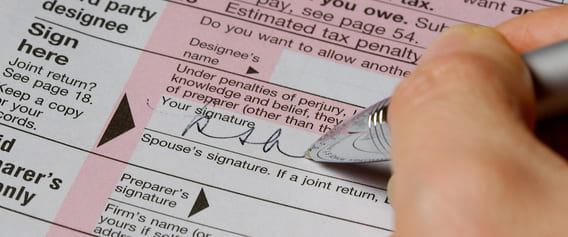How the 2018 Tax Reform Bill Simplified the Filing Process

When the latest Tax Reform Bill was introduced, the U.S.administration displayed postcard-size tax forms to media, along with the message that reforms, which were under way, would help make the filing process so simple that nine of 10 Americans could complete their tax returns with no more difficulty than it took to fill out a postcard. This would be accomplished through an almost doubled standard deduction, designed to discourage taxpayers from itemizing.
According to the Pew Research Center, more than half of Americans believed the tax code needs comprehensive reform. Journalist and NPR contributor, T.R. Reid, pointed out that Congress has passed significant tax reforms about every 32 years: 1922, 1954 and 1986, which put 2018 in line for the most recent overhaul.
For most Americans, the reform was good news. The complexity of the code has been well supported by the IRS’s own research, which has found that tax payers and tax professionals complying with the tax code consumes nearly 6 billion hours each year.
In the process of passing the 2018 Tax Reform Bill, lawmakers suggested that tax filing season would no longer be unnecessarily complicated and time-consuming. “Millions of families will be able to keep more money by simply claiming the new standard deduction,” said Rep. Bill Flores, (R-Texas). “No longer will most American families have to keep boxes of receipts or try to keep up with changes to the existing complex code to see which purchases and expenses they can use to lower their taxes.”
With this reform, the standard deduction doubles, from $6,360 to $12,000 for individuals, and from $12,799 to $24,000 for couples. One of the more polarizing changes included in this tax bill is the elimination of the state and local tax deduction. While this upset many people living in high tax states, the elimination of this deduction does help to accomplish the goal of simplification. The tax bill also made changes for pass-through businesses (so-called because the tax liability is “passed through” to the individual/owner). These changes reduce the tax burden on many small businesses but are viewed by some as further complicating the code.
“For some taxpayers, it will be a little simpler, for some it will be more complex, but overall it will be familiar and folks won’t think of it as some drastic change,” said Joseph Rosenberg, a senior researcher at the nonpartisan Tax Policy Center.
While the tax code may remain complex, filing a tax return doesn’t have to be. E-file.com provided a simplified filing system that can easily handle most individual tax situations. When it comes time to file your taxes, our software will help walk you through the steps to figure out what you owe.
To read more on the 2018 Tax Reform please see our article here: https://www.e-file.com/info/the-2018-tax-reform-bill-known-as-the-tax-cuts-and-jobs-act/
